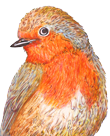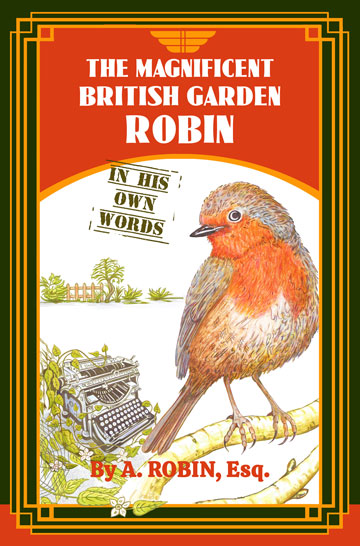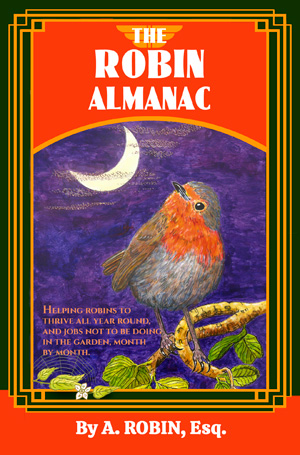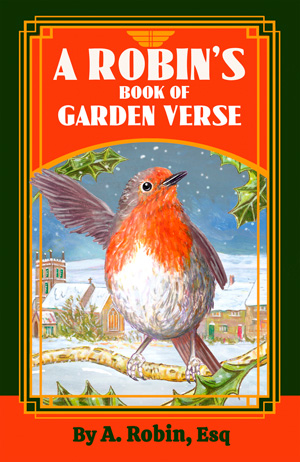Questions and answers - page two
Why do we sing?
Singing is an almost year-round occupation for redbreasts, particularly males. It's largely associated with advertising one’s presence to other birds of the same species and for maintaining a suitable territory. Song also serves to attract a mate during the late winter period and in spring. Robins have even been heard to sing a little at night, especially if there is an artificial source of light for inspiration. Generally speaking, our song is more intense during the winter and spring, becoming more doleful in autumn.
When do we build our nests?
The nesting season for redbreasts can sometimes begin as early as February, but more typically occurs between March and May. Only rarely will we build a nest outside of this period, which is less likely to result in a successful brood. It is the female who builds the nest, by the way, and she will usually do so two or three times in a season, laying typically between four and six eggs - though there are recorded instances of more.

Where do we nest?
We make our nests in a wide variety of places - trees, hedges and thickets being the most natural choices. But nesting boxes that you can buy at garden centres or online are also used by birds these days. Please note: if you are choosing one for a robin, make sure it’s the kind that has the open front rather than a hole. You can find much more information on this important topic in my book.
Where do we vanish to in summer?
This is a question people ask because you don’t see us quite as much in the late summer as at other times of the year. But we are still around. What happens is that we go through a process called moulting, that is losing our feathers. And this renders us a little vulnerable for a few weeks. The old feathers fall out and are replaced with lovely new ones, so it’s great when it’s all over. But we lay low while it’s happening.
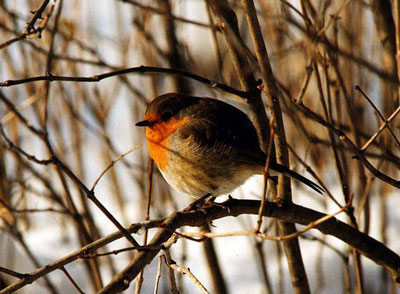
When does a young robin get its red breast?
During their first summer and autumn, young or 'juvenile' robins undergo a partial moult or change in feathers. It is at this time that their plumage alters from a rather dull, speckled brown colour to that of a proper adult one, featuring that splendid scarlet breast and face.
What do we eat?
Redbreasts eat a wide variety of foods, including earthworms, spiders and invertebrates of all kinds; insects, flies and larvae. They will also eat sweet things such as fruit and berries in the autumn and winter. If the weather turns exceptionally cold, food in its natural state becomes difficult to find, and we're grateful then for whatever scraps people can leave out for us. In this respect we love treats like fat balls, mealworms, sultanas and raisins.
Can you tell the difference between male and female robins?
No, because robins to not have external genitalia, and their plumage and markings are the same between the sexes. Around about the nesting period in the spring, the females will lose feathers on their abdomens so as to facilitate heat exchange between their bodies and their incubating eggs. But that, short of elaborate DNA testing, is the only way by which a difference can be reliably detected.Do UK robins migrate?
Yes, we do – or some of us do, anyway. It is estimated that only around one in thirty will venture overseas for a few months in the winter and it is mostly the females who choose to go rather than the males. A greater proportion of us might just roam or change location closer to home - say within a mile or two of their former territories. And each winter there is also an incoming migration of our species from northern Europe to UK shores.
Where can I discover more about Britain's favourite bird?
All the topics mentioned on this website, and many more, are covered in all their scandalous and outrageous detail in this exciting new book - available as an attractive 230-page paperback or as an eBook for your Kindle or Apple device. There is also a sturdy hardcover version available. All versions include over 30 original illustrations by Robert Stephen Parry.

